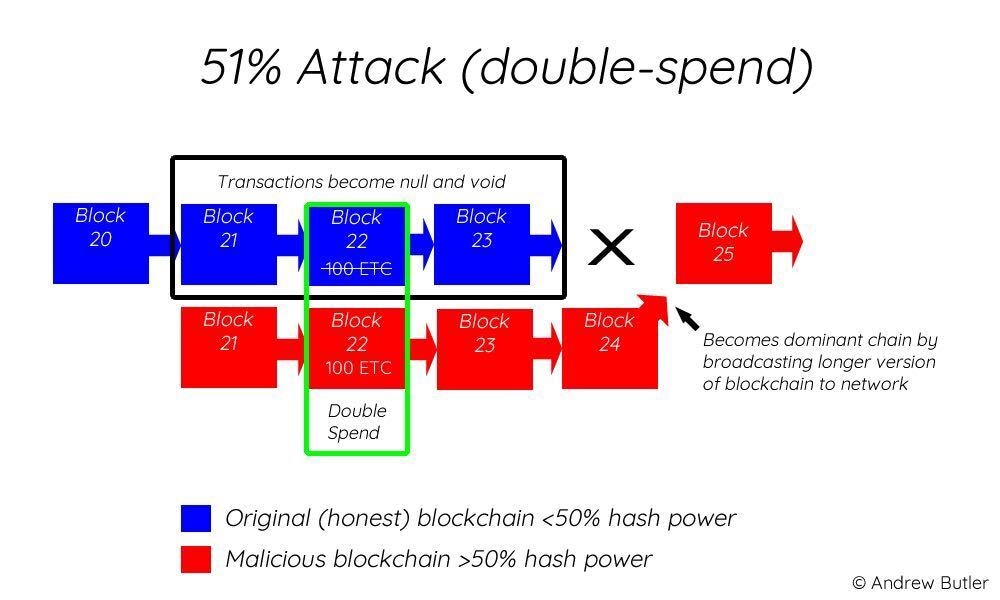Ethereum Classic may be a lost case as community opens up about the blockchain's flaws
- Ethereum Classic came to life due to a hack attack.
- Hackers continue to exploit insecure blockchain.
- The community admits the flaws but has a hard time finding solutions.

Once upon a time, there was DAO
The Decentralized Autonomous Organization, or DAO, was a form of investor-directed venture capital fund that allowed users to raise capital and invest in startups. The project was launched in April 2016 and went bust in September of the same year due to a massive hack attack that cost the platform 3.6 million Ether valued at that time at around $50 million.
Initially, in accordance with the Ethereum's smart contract, the money was placed onto an account subject to a 28-day holding period, so it was not actually gone.
To avoid catastrophic losses, Vitalik Buterin, the Ethereum blockchain creator, proposed to hard fork the network and reversed the transactions related to the hack.
The vast majority of ETH users supported the controversial proposal; however, a group of developers considered that the rollback breaks the principle of decentralization and irreversibility, the cornerstones of the new technology, and the ideology of crypto-anarchism.
Some community members refused to update their software with the new version and kept the old chain alive. Thus, the original Ethereum was born at block 192000 on June 20, 2016. The old chain was renamed as Ethereum Classic.
The dissenters led by Charles Hoskinson and Gavin Wood won the support of a large mining pool MinerGate. In two weeks after the fork, the US-based cryptocurrency exchange Poloniex added the new coin to the list of tradable assets under ticker ETC. Bitfinex, Kraken, and BTC-e followed the lead.
Independence vs. vulnerability
In August 2016, Ethereum Classic's community published the Declaration of Independence with the altcoin's philosophy.
Thus, they promised to keep the blockchain irreversible no matter what and to ensure the coin's decentralization and security. Then the developers hard forked the blockchain to postpone the difficulty bomb and optimize the network operations. Since that time, the team released several updates focused on increasing security and making the coin resistant to hacking attacks.
However, security is the weakest point of the project. Many cryptocurrency community members criticized the team for using an insecure blockchain that the hacker has already exploited.
Serial victim
Despite the hard effort devoted to the team, Ethereum Classic is a regular victim of 51% attack.
By definition, a 51% attack refers to an attack on a blockchain by a group of miners controlling more than 50% of the network's mining hash rate or computing power.
If a person or a group of people control over half of the hash rate, they can interfere with the transaction confirmation. Apart from that, they will be able to reverse the confirmed transactions and double-spend coins.
51% attack flowchart

According to Terry Culver, CEO of Ethereum Classic Labs, a 51% attack is a universal problem of all blockchains based on the Proof-of-Work (PoW) consensus algorithm.
We believe and know that other blockchains get attacked more regularly, maybe with less visibility, he said in response to the most recent series of attacks on ETC in August 2020.
Ethereum Classic suffered three attacks in August, frustrating its users. The first one happened due to rented mining hashpower that allowed hackers to double-spend about $5.6 million ETC.
In the second instance, hackers used the same method and double-spent $1.7 million in ETC via rented mining hashpower from Nicehash. Notably, the same technique was employed in January 2019, when hackers launched a similar 51% attack on the Ethereum Classic blockchain.
Something needs to be done
At this stage, the fate of Ethereum Classic looks gloomy as continuous reorganizations dent users' trust and force cryptocurrency exchanges to delist the coin.
OKEx stated that it would idelist the token if the community fails to improve the security of the network. The cryptocurrency exchange suffered hefty losses during the recent hack attacks on the blockchain.
Other major exchanges, including Poloniex, have taken a wait-and-see approach, ready to delist the coin if the situation does not improve. The coin has continued losing its market share and hash rate, making it even more vulnerable.
The recent proposals
ETC developers admit that Ethereum Classic's vulnerability is rooted in its design, meaning that significant changes are needed to save the project from persistent reorg attacks and eventual collapse.
The critical issue with the updates is that the community should approve of them. Sometimes it is hard to reach consensus and find the solution that would satisfy all the participants.
As Donald McIntyre recently mentioned, several proposals that had been put forward were not aligned with ETC's principles and core values. That's why the ecosystem participants could not agree on changes that would solve the network's problems.
He also proposed solutions and, basically, urged the community to be ready for a compromise for the sake of the project's viability. His core idea is to implement temporary changes that will expire in five years unless the community chooses to extend its validity.
Although ECIP-1098 and ECIP-1100 do not align, according to this author, with sound proof of work based Nakamoto consensus blockchain principles, but as there is significant consensus in the ecosystem that something must be done as soon as possible, at least the limitations prosed to both ECIPs guarantee that they will expire, and a new debate, with a new hard fork, are needed to reactivate them.
ETC/USD: The technical picture
At the time of writing, ETC is ranked 32d with a current market capitalization of $617 million and an average daily trading volume of $516 million. The coin is changing hands at $5.3, down 2% since this time on Monday. The coin has lost over 20% in the last 30 days, though it is still 16% higher from the beginning of the year.
Author

Tanya Abrosimova
Independent Analyst




